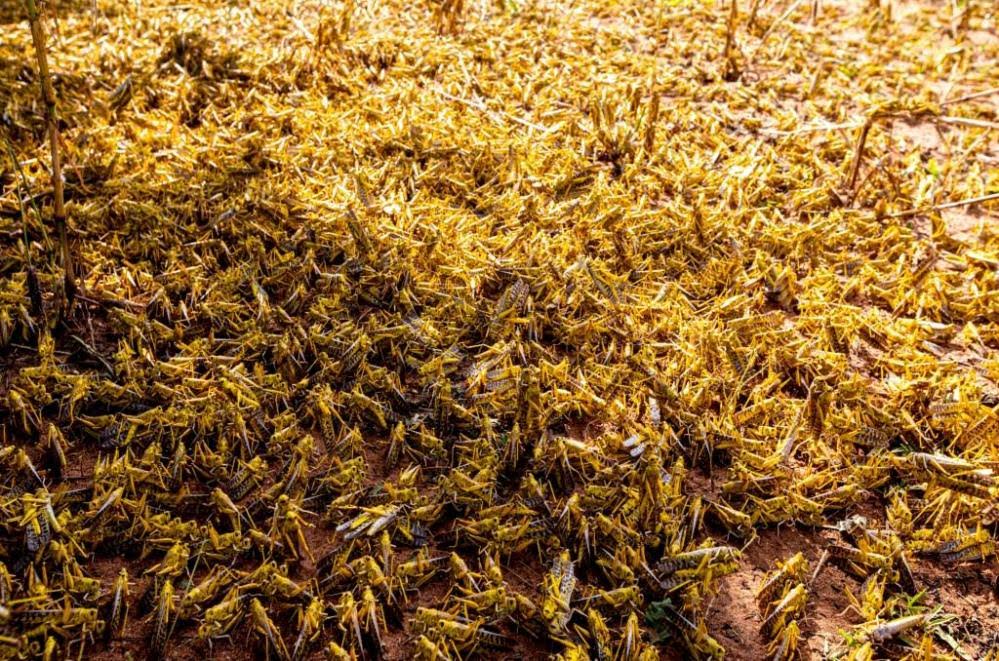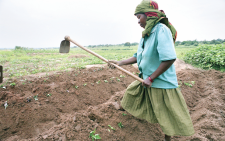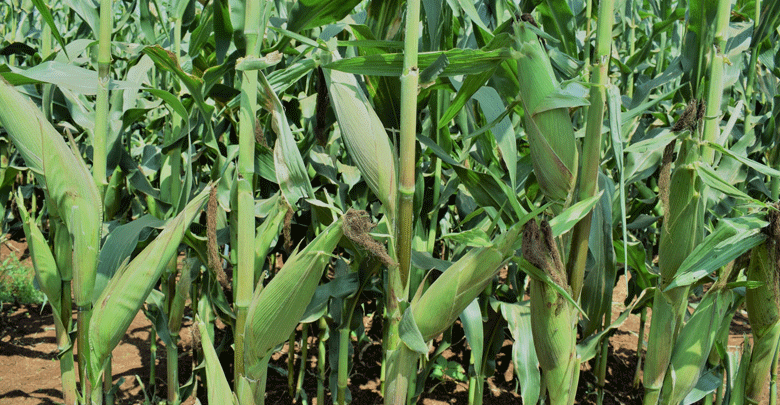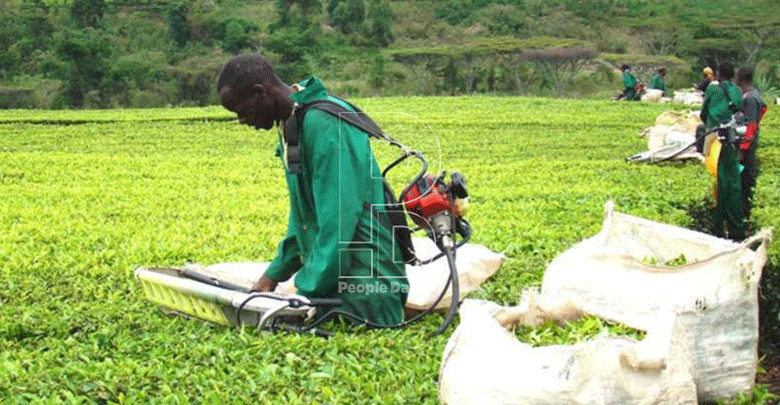Farmers suffer huge losses as locusts wreak havoc

By Nicholas Waitathu and George Kebaso
Kawira wa Leonard, a mother of nine, is staring at a total wipe out of a two-acre mixed farm valued at between Sh800,000 and Sh1 million, a family’s whole livelihood.
This is happening as swarms of desert locust continue their invasion, hewing away any green vegetation in Mutuani village, Tigania East.
Kawira is among an estimated 7,000 villagers that have for the last two days been chasing the swarms using traditional methods such as throwing stones, creating smoke and noise from pots and pans.
Farmers are now worried that if the situation is not contained, they stand to lose over Sh20 million per day on the miraa crop alone.
The damage happens even as the national government and other organisations that are fi ghting the pests claim commendable achievement has been achieved since November 2020.
“Reports indicate that so far, about 183 swarms have settled in the country and of this 157 have been controlled refl ecting an 86 per cent success rate in control efforts,” Agriculture Cabinet Secretary Peter Munya said when addressing the media in Nairobi.
He added: “However, more swarms are expected to invade and settle in the months of February and March based on projections by Food and Agriculture Organisation (FAO) Desert Locust Information Office.
”Meru County leaders estimate that a single farmer is incurring a loss of between Sh2,000 and Sh3,000 of income daily from the miraa crop. Similar damage is also being experienced in other counties.
This implies that in the in the next three days – during which the government and FAO have advised them not to pick the crop for sale or consume any farm produce including cow milk due to the pesticides being sprayed on the insects – they are likely to face a whooping loss of up to Sh63 million.
Kawira said every morning as a family they are joining hands to chase away the locusts using traditional strategies, for example, beating drums, screaming and using twigs.
“It is tiresome and at the same time the locusts change location,” she lamented adding: “We are scared as the swarms are huge and are eating every green vegetation.” Severe effects Government spokesman Cyrus Oguna, however, clarified during a tour of the affected counties by journalists this week that pesticides being used are internationally recognised and do not have severe effects on the human and vegetation.
Patrick Mwenda, a 25-year-old miraa farmer, a father of two is coming to terms with the loses he has incurred on his 2.5 acres piece of land, as the amount of crop he was taking to the nearby Mutuati-Kirira market, fi ve kilometres away, had diminished from fi ve kilos to just a kilo. “Today I only picked a kilo which I am only going to sell at Sh500 from Sh2, 500 I sold yesterday, like any other normal day,” he added.
For Lucy Makena, the invasion by locusts is a like a curse for the region, warning that if not quickly contained it could lead to an economic catastrophe.
“I have three kids in school and now and I depend on the miraa to educate them among meeting other fi nancial obligations. Every year I earn more than Sh150,000 from Miraa and thus able meet my fi nancial commitments,” said Makena in her Mukwani farm in Tigania, Meru County.
Oguna agreed that the second invasion of locusts has caused huge damage to crops, but was quick to add that adequate resources among other efforts have been employed for the last one month.













